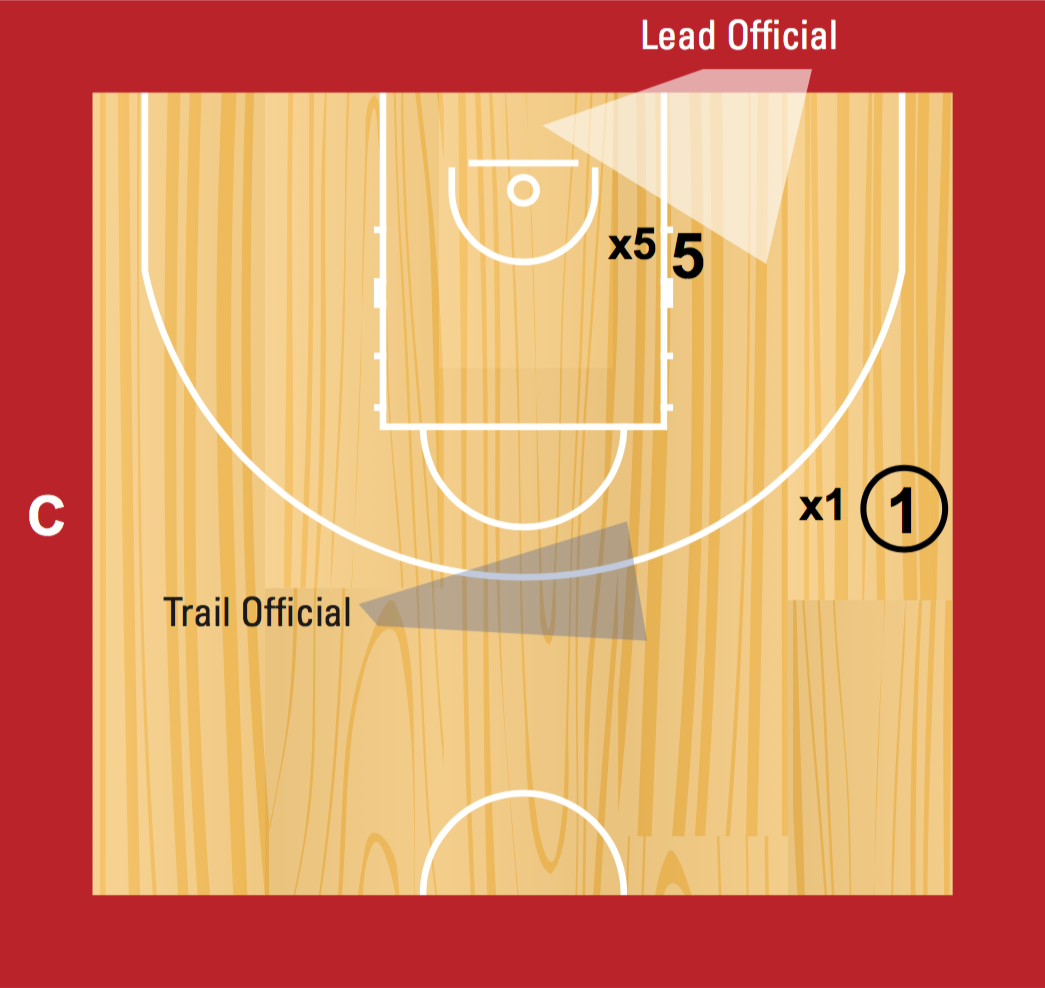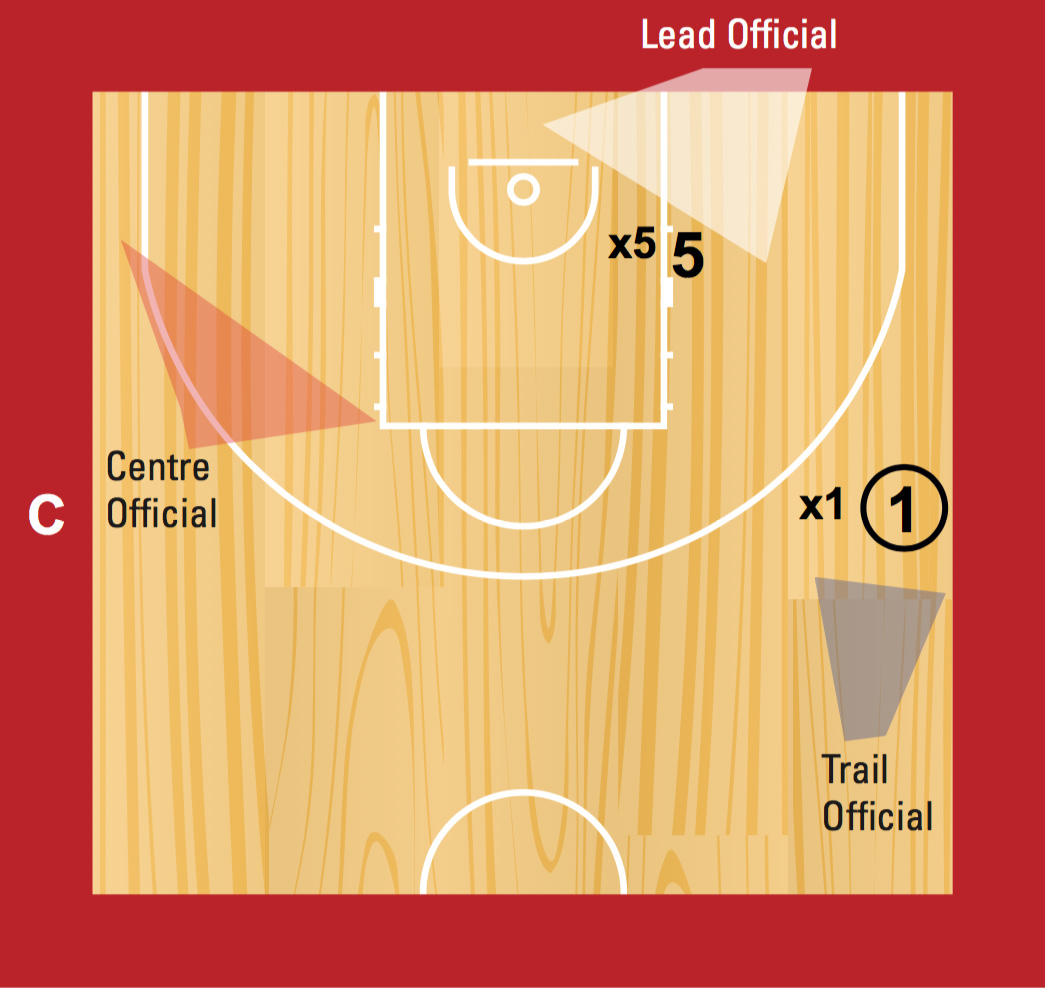- 2.4.1. Techniques de dribble avancées - dribble de renversement
- 2.4.2. Techniques de dribble avancées - snake dribble
- 2.4.3. Techniques de dribble avancées - dribble en throw down
- (English) 2.4.4 Advanced dribbling - step back move (off the dribble)
- 2.4.5. Techniques de dribble avancées - dribble horizontal
- 2.4.6. Techniques de dribble avancées - dribble poussé
- Approfondir
- 2.5.1. Techniques de lay-up avancées
- 2.5.2. Lay-up inversé
- 2.5.3. Techniques de tir avancées - jeu de jambes pour le tir
- 2.5.4. Techniques de tir avancées - tir intérieur
- 2.5.5. Correction de la technique de tir - tir plat
- 2.5.6. Correction de la technique de tir - tir décentré
- 2.5.7. Correction de la technique de tir - effet latéral
- 2.5.8. Correction de la technique de tir - tir trop court
- Approfondir
- 3.1.1. Préparation physique des joueurs de basketball
- 3.1.2 Préparation physique des joueurs - Échauffement avant l’entraînement
- 3.1.3 Préparation physique des joueurs - Échauffement d’avant-match
- 3.1.4. Préparation physique des joueurs - Musculation de force
- 3.1.5. Préparation physique des joueurs - Musculation de puissance
- 3.1.6. Préparation physique des joueurs - Conditionnement
- 3.1.7. Préparation physique des joueurs - Souplesse
- 3.1.8. Préparation physique des joueurs - Programme de musculation de force de base
- 3.1.9. Préparation élémentaire hors saison
- 3.2.1. Considérations nutritionnelles pour les athlètes
- 3.2.2. Besoins nutritionnels pour une bonne santé et le bien-être
- 3.2.3. Stratégies d’hydratation et d’alimentation
- 3.2.4. Prise en compte des particularités physiques
- 3.2.5. Optimiser la performance en compétition
- (English) 3.2.6 Basic sport foods and supplements
- (English) 3.3.1 Physical recovery techniques - overview
- (English) 3.3.2 Physical recovery techniques - active recovery
- (English) 3.3.3. Compression Clothing
- (English) 3.3.4. Physical recovery techniques - hydro therapy
- (English) 3.3.5. Physical recovery techniques - massage
- (English) 3.3.6. Physical recovery techniques - sleep
- (English) 3.3.7. Physical recovery techniques - stretching
- (English) 3.3.8 Physical recovery techniques - practical applications
- 2.1.1. Attaque en continuité – 5 en extérieur – pénétration en dribble – passe main à main
- (English) 2.1.2 Receivers Principles with Post Players
- 2.1.3. Attaque en continuité avec poste – 4 en extérieur, 1 en intérieur
- 2.1.4. Coupes en « post-up »
- (English) 2.1.5 Developing Decision Making - Putting Perimeter and Post Together
- 2.1.6. Création d’opportunités de marquer avec une seconde passe
- 2.1.7. Éloignement du défenseur en aide de sa position d’aide
- Approfondir
Niveau 2
1.2.1 Responsabilités de l’arbitre
Couverture du terrain
Bien que les entraîneurs n’aient pas à connaitre en détail les responsabilités des arbitres, il est essentiel qu’ils sachent qu’il est du devoir de ces derniers de couvrir la totalité du terrain.
Par conséquent, il se peut que les arbitres regardent, à un moment donné, dans des directions différentes ; leur attention sera alors portée sur une zone autre que celle que l’entraîneur observe.
Dans ce cas, l’arbitre de tête se concentre sur les joueurs de poste (et la raquette) et l’arbitre de queue se focalise sur la balle, au niveau des ailiers.
Si l’entraîneur pose une question au arbitre de queue par rapport à une action dans la raquette, ce dernier ne sera probablement pas au courant des faits puisque cette zone n’est pas sous sa responsabilité.
(English) In “3-man officiating ” the centre official (who is positioned closest to the coach) is responsible for what is happening off the ball, on their side of the court.
Accordingly, if the coach asks the centre official about what was happening in the ball-side low post, or on the ball, the centre official is probably unaware of what was happening.
(English) Most importantly, coaches must appreciate that they are in a different position to the referees so will have a different view of what is happening on court. Not only will what they see be affected by where they are standing but also by the position of other players on the court, which may obscure what they can see.
A coach may therefore see something that the official misses just as often as the official will see things that the coach misses. Both coach and official have their job to do and they should support each other.
The Importance of Mechanics
Officials are taught specifically how to move around the court and these “mechanics” (or rules of movement) are designed to ensure that:
- there will be one official who has a view of any particular action that is occurring on the court (whether it is on ball or off the ball);
- that official will be in the best position to see the action and particularly to officiate:
- who has caused any contact;
- whether players are in a legal or illegal position.
The mechanics are a guideline for the official to help them to perform their role and to do so working in partnership with other officials. Officials are required to make hundreds of decisions every game – not just when to “make a call” but also when to “hold their whistle”. They are officiating all ten players – moving in a relatively small area of court sometimes quickly, sometimes slowly.
They will undertake this role better if they are not also having to deal with coaches yelling and screaming on the sideline!

